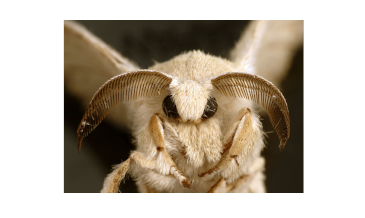- Series:Animals, God’s Design, Transcript English
Psalm 40:5
“Many, O LORD my God, [are] thy wonderful works [which] thou hast done, and thy thoughts [which are] to us-ward: they cannot be reckoned up in order unto thee: [if] I would declare and speak [of them], they are more than can be numbered.”
 There are many methods of communication, some of which we human beings don’t often think about. One of these is chemical communication.
There are many methods of communication, some of which we human beings don’t often think about. One of these is chemical communication.
Take, for example, the female silkworm moth. When she is ready to mate, she releases a very small amount of a chemical. This chemical, called a pheromone, can attract a male silkworm moth from up to two miles away. Even though the female has released only 100-millionth of a gram, the male can sense the chemical. Many other insects use similar pheromones to attract mates.
Pheromones are also used for chemical communication by ants to mark their trails. When an ant finds a good source of food, it returns to the nest, leaving an invisible scent trail. Its fellow ants also use this trail to find the food. As long as they still find food they will continue to reinforce the scent. Once the supply is exhausted and ants no longer follow the trail, it disappears within a few minutes. This chemical scent is so specific that another species of ant will not recognize the trail if he stumbles upon it. This helps protect the ants’ food source from being discovered by other ants.
Chemical communication allows the communicator to communicate to another of its species, even over long distances. In one sense, pheromones are the animals’ version of radio.
Prayer: If it had been up to me to design and build the creation, Lord, my best effort would not compare with what we have from You. Help me to remember this when I try to build my life without You. Amen.
Author: Paul A. Bartz
Ref.: Emmel, Thomas C. Worlds Within Worlds-An Introduction to Biology, page 333. Photo: Silkworm moth by CSIRO – CCA 3.0 Unported
© 2022 Creation Moments. All rights reserved.
